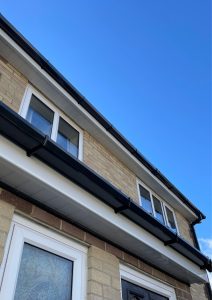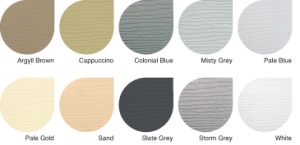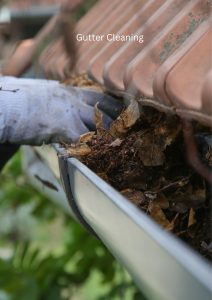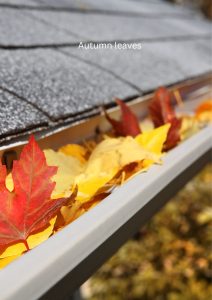Everything You Need to Know About UPVC Roofline: A Homeowner’s Guide
UPVC roofline is essential for protecting your home from the elements and enhancing curb appeal. For South Wales homeowners, high-quality UPVC roofline guards against rain, wind, and seasonal challenges.
This guide covers installation, materials, colours, maintenance, and the importance of a knowledgeable, safety-conscious installer. Whether installing, repairing, or maintaining, this blog helps you make informed choices.

What is a UPVC Roofline?
UPVC roofline includes fascia boards, soffits, guttering, and sometimes cladding along your roof edges. Made from unplasticized polyvinyl chloride, these parts protect from water damage, dampness, pests, and give a neat finish.
What is unplasticized polyvinyl chloride?
Unplasticized polyvinyl chloride (UPVC) is a rigid, durable plastic widely used in building materials like roofline products. Unlike regular PVC, UPVC contains no plasticisers, making it harder, more weather-resistant, and less prone to warping or bending. This makes it ideal for fascia boards, soffits, guttering, and cladding, providing long-lasting performance and excellent protection against the elements.
- UPVC is a rigid and durable plastic used in building materials.
- Contains no plasticisers, unlike regular PVC.
- More weather-resistant and less prone to warping or bending.
- Ideal for fascia boards, soffits, guttering, and cladding.
- Provides long-lasting performance.
- Offers excellent protection against weather elements.
The material is also available in a range of colours and finishes, including popular options like white, dark grey, and wood-effect shades such as light oak and rosewood. This variety allows homeowners to choose roofline products that perfectly complement their home’s aesthetic appeal while providing a cost-effective solution to replace traditional timber components.
Overall, UPVC offers a durable, maintenance-free, and visually appealing choice for roofline products, making it a preferred option for both new builds and renovation projects across the UK.
Benefits of UPVC Roofline:
- Durable & Weather-Resistant: Won’t rot, warp, or corrode.
- Low Maintenance: Needs only occasional cleaning.
- Variety & Style: Available in many colours, finishes, and profiles.
- Supports Roof Ventilation: Vented soffits regulate airflow.
Common Questions About UPVC Roofline
- Durable & Weather-Resistant: Won’t rot, warp, or corrode.
- Low Maintenance: Needs only occasional cleaning.
- Variety & Style: Available in many colours, finishes, and profiles.
- Supports Roof Ventilation: Vented soffits regulate airflow.
Common Questions About UPVC Roofline
Here are the most asked questions from homeowners:
1. Is a UPVC Roofline Long Lasting?
High-quality UPVC roofline lasts 25–30 years with proper installation and maintenance.
2. What Colours and Styles Are Available?
UPVC roofline comes in many colours beyond white, including dark grey:
- White
- Black Ash
- Misty Grey
- Golden Oak & Rosewood (wood-effect)
Guttering:
- Black
- White
- Brown
- Anthracite Grey
Shiplap Cladding:
- White
- Anthracite Grey
- Golden Oak
- Cream & Charcoal

3. Can UPVC Roofline Be Installed on Any Home?
Yes. UPVC roofline suits:
- Traditional cottages
- Modern detached homes
- Semi-detached houses
Professional installers custom-cut and fit each part for perfect weatherproofing and durability.
4. How Often Should UPVC Roofline Be Maintained?
Although low-maintenance:
- Clean Fascias &a Soffits: Twice yearly with warm, soapy water
- Inspect Gutters: Check for blockages each autumn and spring
- Check Cladding: Look for damage after storms
Regular care extends lifespan and prevents costly repairs.

Do I Need Planning Permission?
For Roofline (Fascia, Soffits, Gutters)
Generally no, unless your home is listed or in a conservation area, where restrictions may apply.
For Cladding
Check local council rules, especially if in a conservation area or listed building. Planning permission may be needed.
Health, Safety, and the Importance of a Professional Installer
UPVC roofline installation involves health and safety risks. Hiring a professional company ensures safe, compliant work.
Key points:
- Working at Height: Professionals use scaffolding and safety gear.
- Asbestos Awareness: Older homes may contain asbestos; only trained installers should handle.
- Regulatory Compliance: Ensures legal and safe installation.
- Professional installers protect your home and safety.
Seasonal Considerations: Why October is Ideal
Autumn is the best time to inspect and maintain UPVC roofline. Falling leaves and rain reveal weak spots.
Check:
- Gutters and downpipes
- Fascia and soffits for cracks or rot
- Cladding for loose or damaged panels
- Fixing issues before winter prevents water damage and damp.

How to Choose the Right UPVC Roofline Products
Consider:
- Material Quality: Choose weather-resistant products.
- Colour & Finish: Match your home’s style.
- Functionality: Select vented or non-vented soffits.
- Installer Reputation: Look for experience, reviews, and guarantees.
Smart choices ensure efficient, lasting roofline.
Common Mistakes to Avoid
- Neglecting gutter maintenance
- Poor colour choices
- Attempting DIY installation
Conclusion
Perfect Roofline
UPVC roofline offers durable, maintenance-free protection and enhances your home’s look.
- Durability: Lasts 25–30 years without rot or warping.
- Low Maintenance: Just occasional cleaning needed.
- Seasonal Checks: Autumn inspections prepare for winter.
- Professional Installation: Ensures safety and quality.
- Design Options: Various colours and wood-effect finishes.
- Functionality: Vented roofline aids ventilation; fascia boards protect rafters.
- Weather Resistance: Withstands British weather.
- Cost-Effective: Saves money and effort over time.
